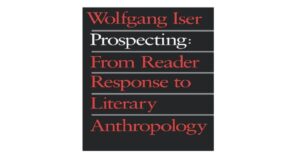Reader-Response Theory and 5 Important Types
Reader-response theory is a literary theory that emphasizes the reader’s role in interpreting a text. It suggests that the meaning of a text is not fixed or determined by the author’s intentions, but is instead created by the reader through their individual response to the text.
This theory rejects the idea that there is a single, objective interpretation of a text, and instead argues that meaning is subjective and personal. Reader-response theorists believe that readers bring their own experiences, beliefs, and biases to the text, and that these factors influence their interpretation of the text.

Table of Contents
Types of Reader-Response Theory:
- Transactional reader-response theory: This approach, led by Louise Rosenblatt and supported by Wolfgang Iser, involves a transaction between the text’s inferred meaning and the individual interpretation by the reader.
- Affective stylistics: This approach, established by Stanley Fish, believes that a text can only come into existence as it is read, and therefore, a text cannot have meaning independent of the reader.
- Subjective reader-response theory: This approach, associated with David Bleich, looks entirely to the reader’s response for literary meaning.
- Psychological reader-response theory: This approach, employed by Norman Holland, believes that a reader’s motives heavily affect how they read, and subsequently uses this reading to analyze the psychological response of the reader.
- Social reader-response theory: This approach, developed by Stanley Fish, states that any individual interpretation of a text is created in an interpretive community of minds

Proponents and their works:
- Louise Rosenblatt: “Literature as Exploration” (1938)
- Stanley Fish: “Surprised by Sin” (1967)
- Norman Holland: “The Dynamics of Literary Criticism” (1968)
- Wolfgang Iser: “The Act of Reading: A Theory of Aesthetic Response” (1978)
- David Bleich: “Readings and Feelings” (1975)
Important terms associated with Reader-Response Theory:

- Reader-response criticism: The critical approach that focuses on the reader’s response to a text.
- Transactional theory: Louise Rosenblatt’s term for the dynamic interaction between reader and text.
- Affective fallacy: The idea that a reader’s emotional response is a valid interpretive tool (Stanley Fish).
- Subjective criticism: The approach that emphasizes the reader’s personal response and experience.
- Interpretive community: Stanley Fish’s term for the shared values and beliefs that shape a reader’s interpretation.
- Reading strategy: The conscious or unconscious approach a reader takes to interpreting a text.
- Textual cues: The linguistic and structural elements that guide the reader’s interpretation.
- Inferred meaning: The meaning a reader infers from the text, beyond its literal sense.
- Gap theory: Wolfgang Iser’s idea that readers fill in gaps in the text with their own meanings.
- Implied reader: The hypothetical reader a text assumes or implies (Wolfgang Iser).
- Actual reader: The real individual reading the text, with their unique experiences and biases.
- Readerly text: A text that encourages the reader to engage actively with its meanings (Stanley Fish).
These terms reflect key concepts in Reader-Response Theory, highlighting the dynamic interaction between reader and text.
Major Concepts:

- Reader’s role: Reader-response theory highlights the reader’s active participation in creating the meaning of a text.
- Meaning as transaction: The reader’s interpretation is seen as a transaction with the text’s inferred meaning.
- Affective response: The reader’s emotional response is considered a legitimate starting point for criticism.
- Subjective interpretation: Reader-response theory acknowledges that interpretation is subjective and personal.
- Interpretive communities: The theory recognizes that readers are part of communities that shape their interpretations.
Objections: - Traditional text-oriented critics argue that reader-response criticism is too subjective and lacks objectivity.
- Some critics argue that reader-response criticism overlooks the text’s ability to expand the reader’s understanding.
Extensions: - Reader-response criticism relates to psychology, cognitive psychology, psycholinguistics, neuroscience, and neuropsychoanalysis.
- It can be applied to other arts, such as cinema, music, and visual art, and to history.
- It shares concerns with feminist critics, gender and queer theory, and postcolonialism.
Read and Learn more: Queer Studies and CRT: 2 Important Theories






